Amblyrhynchus cristatus
—
Marine Iguana
Marine Iguanas feed in the sea (on the algae growing on underwater offshore rocks), and are the only lizards in the world to do so. They live only in the Galápagos Islands. Charles Darwin was fascinated by them on the historic voyage of the Beagle, though he found them exceptionally ugly and called them "imps of darkness".
As many as 11 subspecies are recognized by some authorities, but the types don't seem very well differentiated, and it seems pretty clear from genetic studies that there is quite a bit of gene flow among the purported subspecies.
Subspecies I've seen:
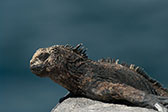
A. c. hassi
Santa Cruz Marine Iguana
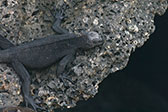
A. c. nanus
Genovesa Marine Iguana
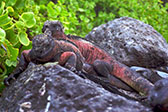
A. c. venustissimus
Española Marine Iguana
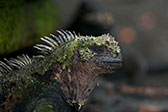
A. c. wikelskii
Santiago Marine Iguana
Amblyrhynchus cristatus hassi
—
Santa Cruz Marine Iguana
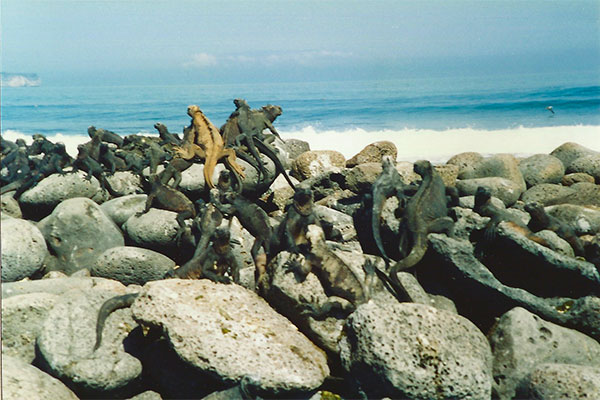
What an amazing sight -- dozens of large sea-going lizards piled up on the beach rocks, oblivious to the people admiring them.

Marine Iguanas spend most of their time lying around on rocks to gather heat.
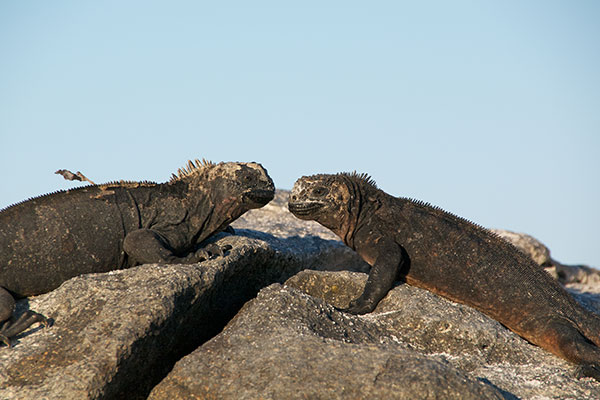
Most of Mosquera Beach was covered by sand, which was in turn covered by sea lions. But in the center of the sand a small lava outcrop housed a pair of resident iguanas.
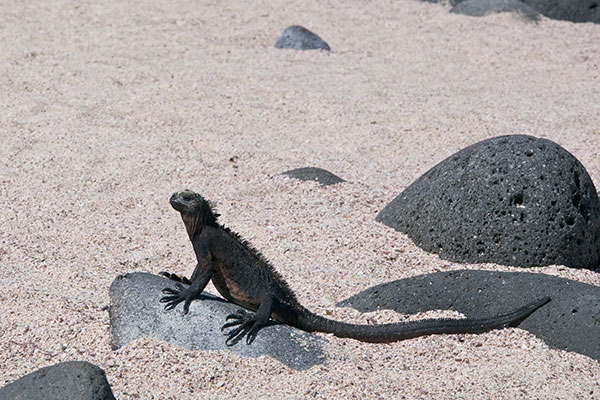
When lying around on rocks doesn't gather enough heat, one can always try sitting up high.
Amblyrhynchus cristatus nanus
—
Genovesa Marine Iguana
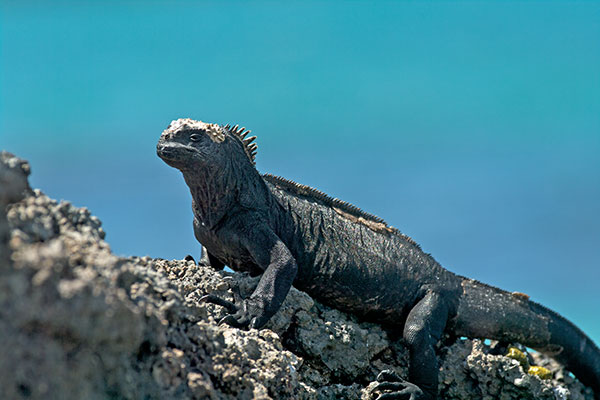

Genovesa is small and isolated from the other islands. The marine iguanas on this island are the smallest ones in the archipelago.
Amblyrhynchus cristatus venustissimus
—
Española Marine Iguana

Like many of the animals on the Galápagos, the marine iguanas are completely unafraid of people, so you can get decent pictures of them even with the lousy camera I had back then.
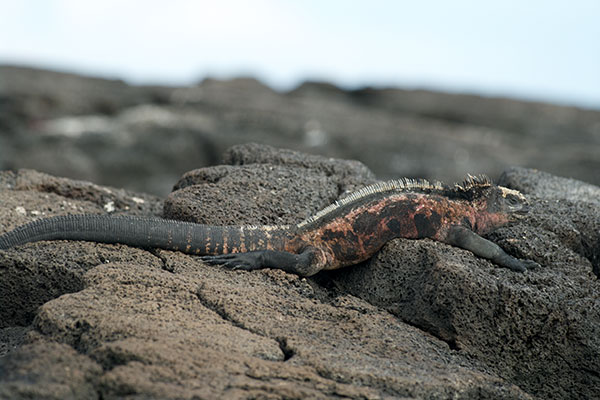
The marine iguanas on Floreana had more red coloration than any others we saw on this trip. Our guide told us that we were a little late in the year to see them in their full breeding color glory though.
Amblyrhynchus cristatus wikelskii
—
Santiago Marine Iguana
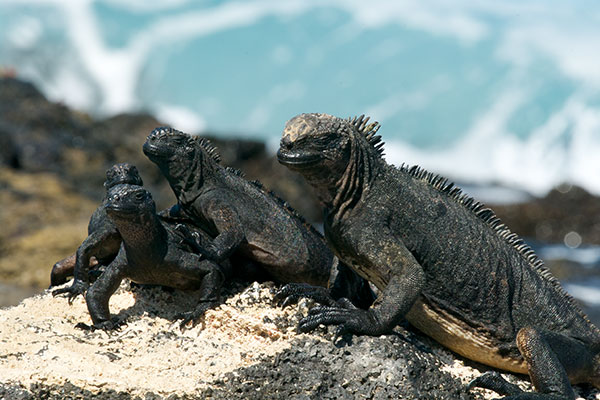
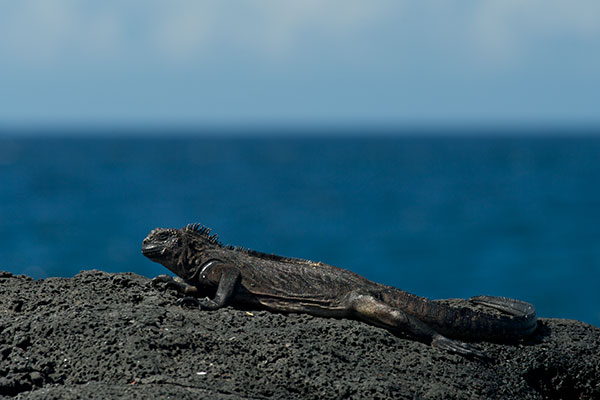
Iguanas were basking up a storm on a sunny morning on the tiny spatter cone island Sombrero Chino.
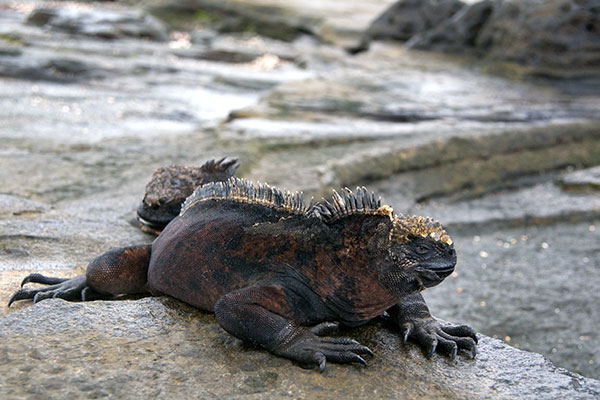
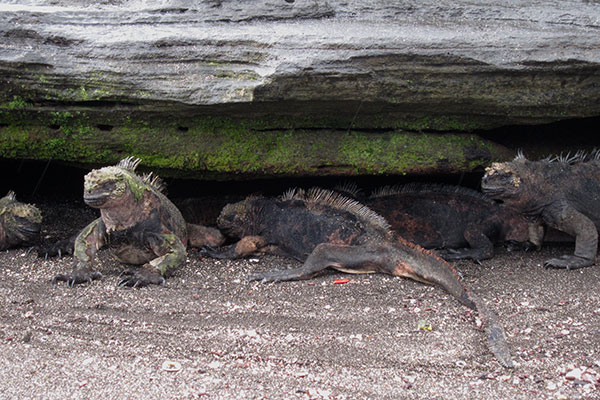

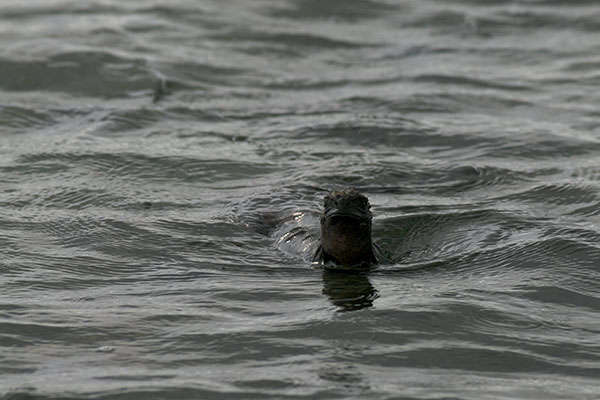
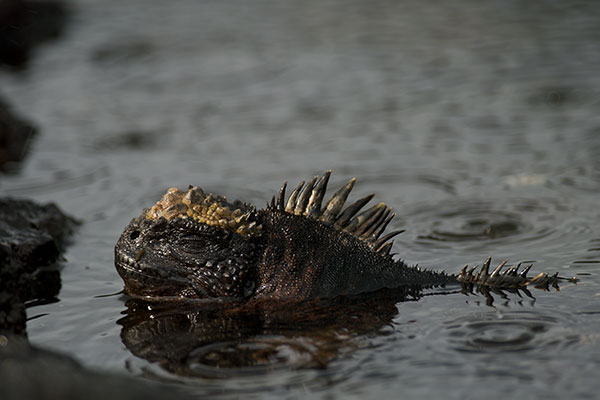
That afternoon the weather turned on-and-off drizzly, and when we visited a large colony of marine iguanas on the shore of James Bay, we found that many of them were huddled in crevices and beneath rock overhangs to avoid losing too much of their precious body heat. A brave few were splayed about in the open, and an even braver few were out in the ocean, returning from algae-munching expeditions.
Online references:
- Amblyrhynchus cristatus account on iNaturalist
Printed references:
- Jackson, M. H. 1993. Galápagos: A Natural History
- Swash, A., and Still, R. 2005. Birds, Mammals, and Reptiles of the Galápagos Islands: An Identification Guide, 2nd Edition